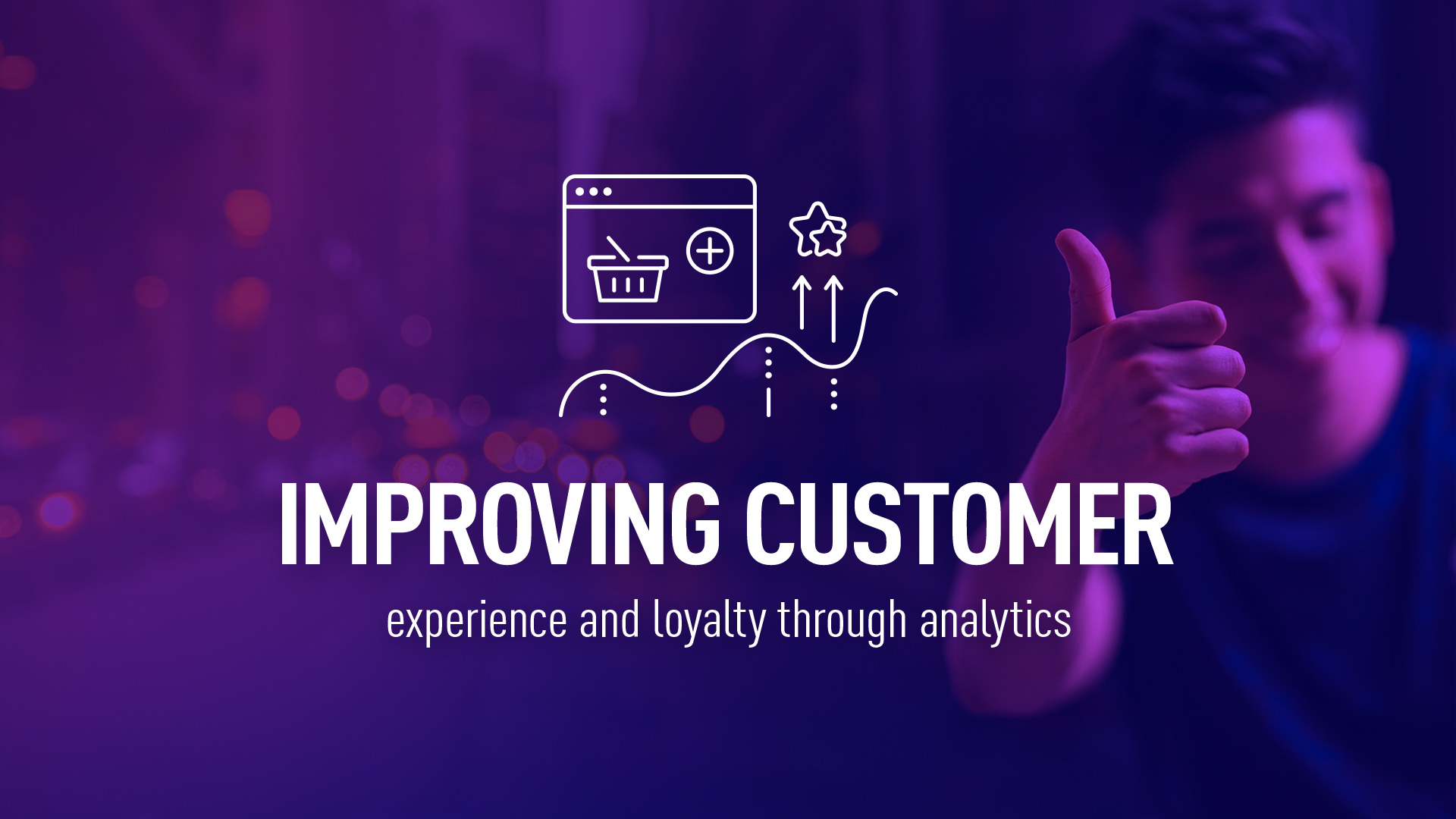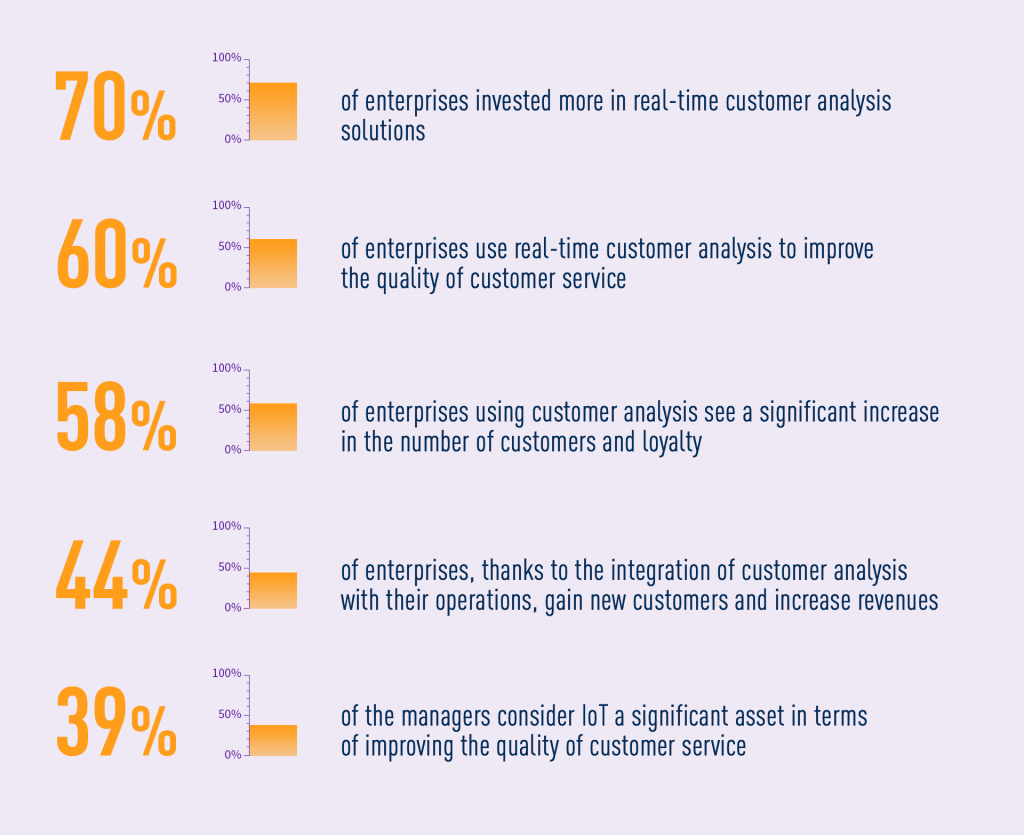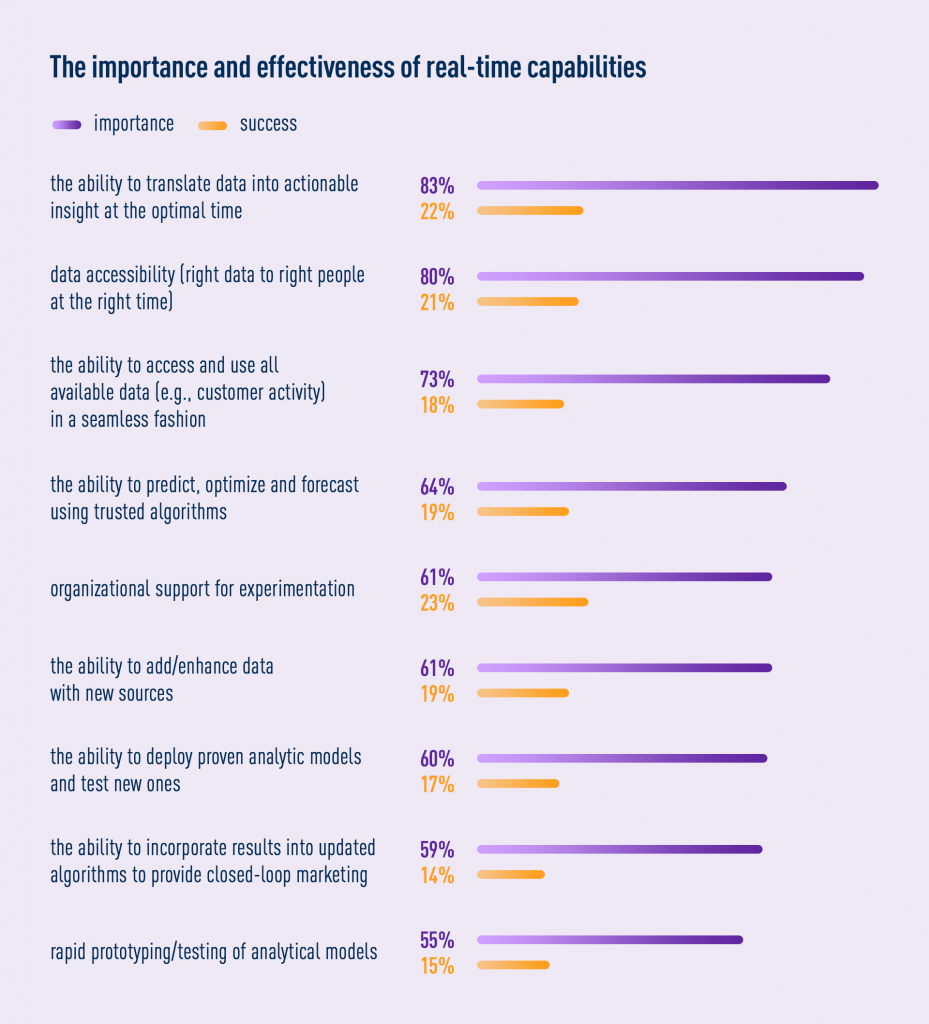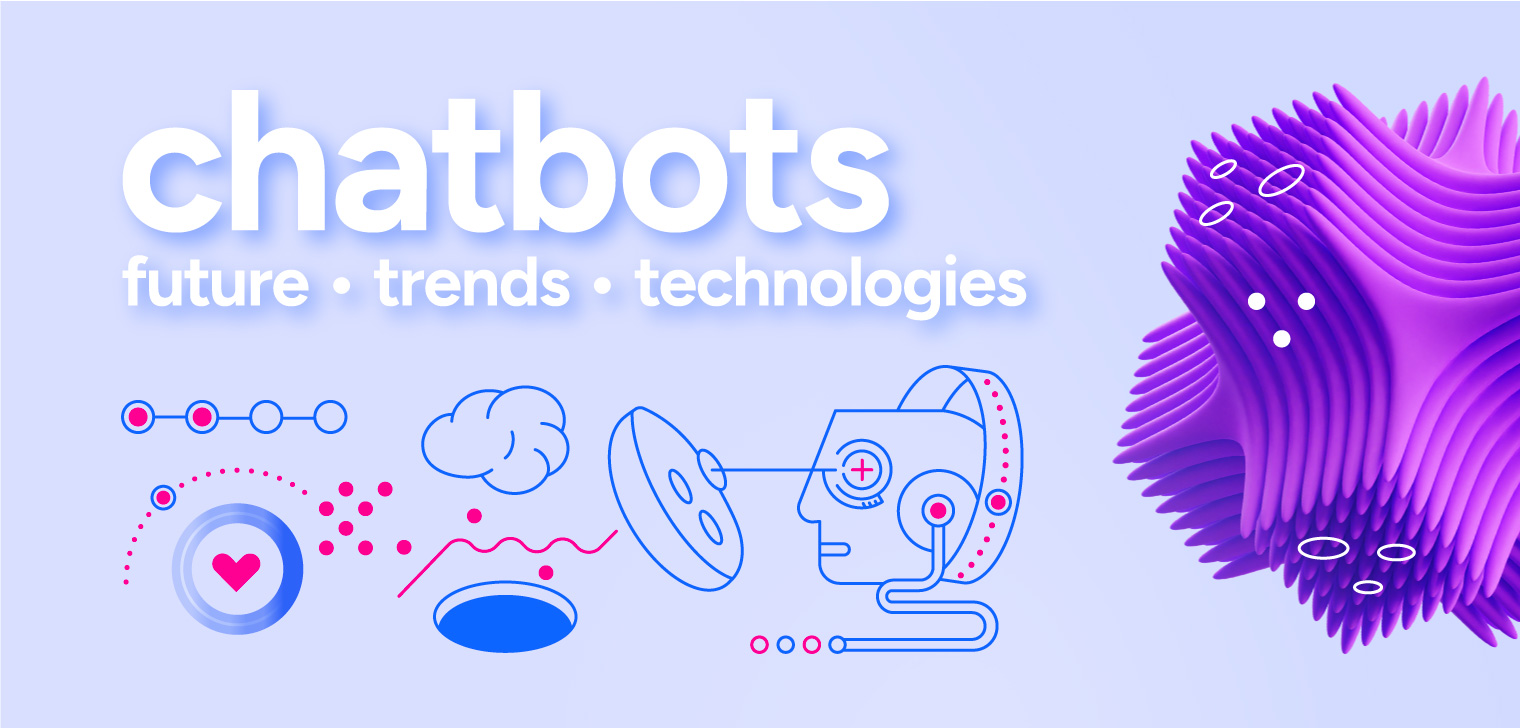Insights
- category:
Improving loyalty and experience with customer analytics

An understood customer is a satisfied customer. A satisfied customer is a pure profit. One thing is certain. Customer analytics is one of the main drivers for business development and revenue increase. You may conduct basic analysis in a simple way, drawing conclusions from customer surveys. However, you might also want to get inspired by the percentages from this text and bet on some more advanced methods.
In order for the business to develop and flourish, it is necessary to understand the customers and improve interaction with them. Customer satisfaction has a direct impact on the customer experience. It decides whether they decide to buy from your company or turn to the competition.
Your most unhappy customers are your greatest source of learning.
Bill Gates
Proper recognition and meeting the customers’ needs is possible when monitoring the customer satisfaction level. It is crucial to listen to what they have to say about your services or products. Stories about customer experience with your brand will help you identify your business’s strengths and weaknesses and discover areas that require more work and improvement. But you also need a properly conducted customer data analytics.
Creating a simple, effective customer satisfaction survey
If you wish to understand your customers, talk to them. It’s good to know not only what questions to ask but also when to ask them. Obtaining feedback makes the most sense when addressing customers right after an interaction. It enables them to pass their fresh opinions. It is worth constructing a questionnaire and sending it to your customer after a completed purchase process, after performed service or after the customer decided to resign.
An effective survey, that is the basis for customer analytics, should include four elements:
Overall rating of customer satisfaction
This part of the survey may include questions about the level of overall customer satisfaction, the odds of returning, the probability of re-purchase or the likelihood of recommending a brand. Questions may require a ‘YES/NO’ answer, as in the case of ‘Are you satisfied with the service?’ or choosing the answer corresponding to the level of satisfaction, e.g. ‘How satisfied are you with your experience with our brand? Very happy. / I’m quite happy. / On average. / I’m not happy. / I’m very unhappy.
Performance rating in specific areas
This element of the survey examines what is really important for customers and which areas may need improvement e.g. ‘How do you rate your experience with our brand in the following areas: consultant’s assistance, product quality, timely delivery?’.
Behaviours & demographics
Behavioural and demographic data allows building more and more accurate customer segments that enable better personalization and targeting of offers and advertisements. When building the questions in this part of the survey, do it so that you could easily differentiate feedback from regular and new customers, customers from different regions, or different types of companies (distinguishing a company size, an industry, etc.). For example: ‘How long have you been using our product?’, ‘Does the population in the city you live in exceed the value of […]?’, ‘What industry does your company represent?’, ‘How many employees are there in your company?’. Questions may be both closed, suggesting a specific numerical range, and open enabling a greater accuracy.
Open questions
Undoubtedly, this type of questions provides the deepest customer analysis into given feedback as they enable a free, long reply. They are very helpful, yet you shouldn’t discourage the customer with too many of them, as they are quite time-consuming and labour-intensive.
Such a questionnaire provides insight into what the customers think about your brand. However, you shouldn’t stop at the survey as it is just the beginning
Making use of data from the customer survey – monitoring KPIs
Data collected on the basis of the customer survey may be used as key performance indicators (KPIs). Such a set of data helps detect and understand the strongest drivers of satisfaction and dissatisfaction. This knowledge, in turn, helps prioritize changes and advancements aimed at improving customer experience.
Get closer than ever to your customers. So close that you tell them what they need well before they realize it themselves.
Steve Jobs
Customers’ responses over time will create a database of specific problems and room for improvement. Above all, however, they will form a number of patterns of how your customers use your products and services. That will help you understand what amendments to your products and services should be made to increase customers satisfaction. Simple customer data analytics in a shell.
It is always worth maintaining contact with the customer. When the customer has already completed and sent back the questionnaire, send back the ‘Thank you e-mail’ acknowledging the contribution to the product development or customer experience improvement and give examples of specific actions to be taken due to the information gathered.
The customers will always appreciate the fact that there is someone who listens to them, and who treats their opinions as valuable hints for the company.
Advanced means of customer analytics
The customer analytics is essential for the improvement of the quality of customer service in all channels on the basis of which the company operates – marketing, sales and service. It may be applied in such significant business aspects as, for example, a customer-oriented strategy, personalization of offers and messages, real-time customer interaction in various channels.

A study conducted by Harvard Business Review Analytic Services has shown that sectors such as banking, retail and telecommunications have a chance to gain the biggest growth through implementation of customer data analytics.
Don’t find customers for your products, find products for your customers
Seth Godin
Currently, companies that take advantage of customer analytics use data mainly to build a customer-centric approach. They primarily focus on personalization, customizing offers and marketing messages for each target group and individuals, while operating in real-time. Companies that use AI and those that have developed machine learning algorithms achieve the highest results. As AI systems perfectly learn when and how to offer up-selling, to whom recommend which product, how to adjust prices depending on the demand and pricing strategies of the competition.
Companies do not make effective real-time analysis
Only 16% of surveyed companies that use real-time customer analysis have found their brands very effective in ensuring real-time interaction with customers across various channels. 30% found themselves totally ineffective. At the same time, as many as 60% of business leaders said that delivering customer interaction in real-time is extremely important.

According to 83% of respondents, the measure of the effectiveness of customer analysis in real-time is the ability to transform data into business insight that can be applied in an optimal time. However, only 22% is doing well with this task. 61% of entrepreneurs who appreciate the importance of customer analysis in real-time need professional help in this area. 80% of respondents report a problem with using the right data in relation to the right people at the right time. 73% indicates a technical problem related to the lack of real-time systems integration with legacy systems. However, the biggest problem is the access to customer data, the analysis of data itself and drawing conclusions from the analysis, which drive taking actions.
Customer satisfaction is a rating. Loyalty is a brand.
Shep Hyken
Efforts to use marketing solutions in the real-time payoff. They provide in-depth knowledge about your customers and help understand them. Each company can start to improve customer experience through real-time analysis.
TASIL does it all for you
TASIL, as a real-time data marketing platform, enables hyper-precise customization of marketing messages. TASIL performs customer data analytics for you and draws conclusions so that your ads, transaction information or offers can reach the right people at the right time. In only 4 months you can have an effective real-time marketing solution to work for your benefit.



